Are there any alternatives to ratchet-handle pipe cleaners? |
||||
|
|
||||
Four-in-one pipe cleaner |
||||
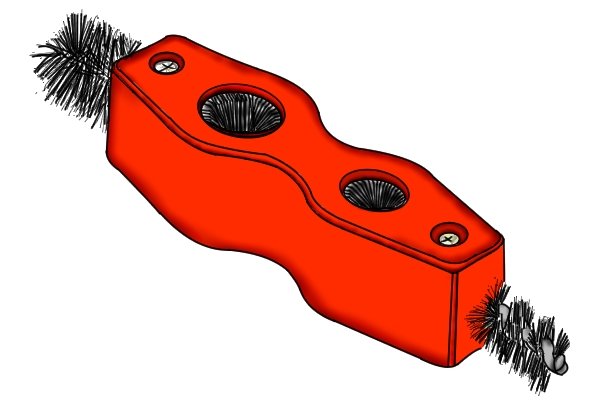 |
A four-in-one, or combined, pipe cleaner is a hand tool with two different sized holes, one 15mm in diameter and the other 22mm, filled with metal teeth. You push the pipe into the corresponding hole and rotate the tool to clean the outside.
At each tip of the tool is a wire brush, one for 15mm pipes and the other for 22mm ones. Insert the correct sized one into the end of the pipe and turn briskly to clean it inside. This type of tool is cheaper than the ratchet-handle variety, but requires more effort. |
|||
Pen reamer |
||||
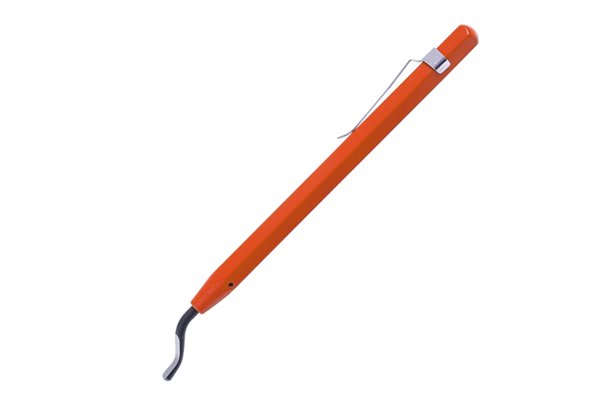 |
Also known as a bladed deburrer or deburring knife, a consists of a swivelling metal blade mounted on a handle. You use it to scrape round the inside of pipes, holes, tubes or sheet metal to remove burrs. However, great care is needed to avoid damaging the pipe with the sharp blade.
You can either buy a disposable pen reamer or spend a little bit more and get one with replaceable blades. They are only suitable for deburring pipes around the rim, so you will need another tool to polish the outer surface. |
|||
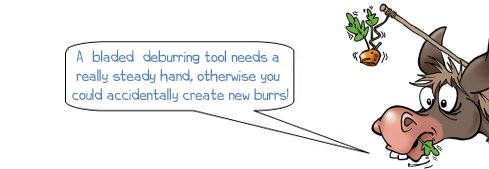 |
||||
Wire brush |
||||
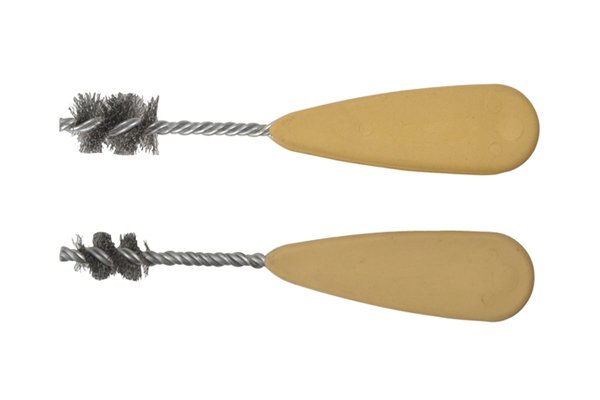 |
A is relatively cheap, can be used in small spaces and comes in a variety of sizes. However, it requires more elbow grease than a ratchet-handle pipe cleaner and is only suitable for cleaning pipes on the inside. | |||
Emery cloth |
||||
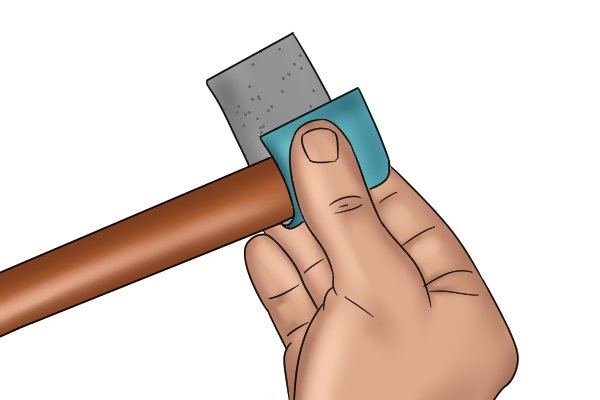 |
Emery cloth is a disposable fabric strip which has been coated in small metallic or synthetic particles to make it abrasive.
It is suitable for smoothing and polishing all types of metal pipe surfaces as well as removing paint or corrosion marks. Although much cheaper than a ratchet-handle cleaner, it is of course much less durable and cannot be used for cleaning the pipe inside. |
|||
Scouring pad |
||||
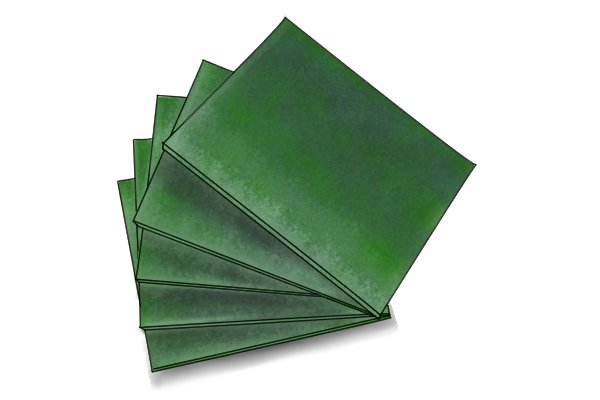 |
A scouring pad is usually made of plastic and comes in various sizes, some types being more abrasive than others.
Packs are cheap and easily available, but you may need to work on a pipe for a long time to get smooth results and you can’t use it for the inside. It is not as tough as emery cloth and is more often used as a general purpose cleaner. |
|||
Steel wool |
||||
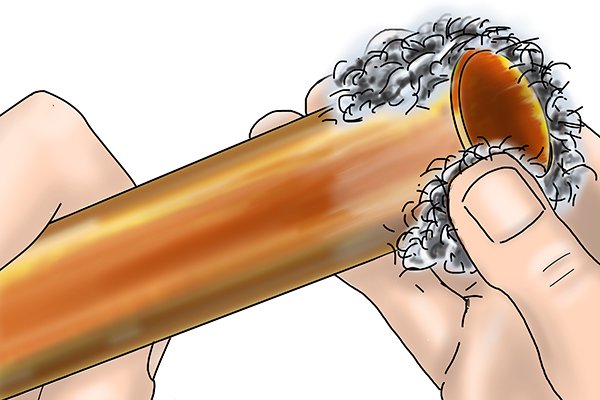 |
Steel wool, also known as wire wool, comes in eight different grades, or thicknesses, and is extremely abrasive. The medium-fine grade is recommended for use on copper pipes.
You can buy it as individual pads in various sizes, or in long rolls. Steel wool is versatile, cheap to buy and much tougher than scouring pads. However, it can rust in damp conditions and is not suitable for cleaning inside the pipe. |
|||
Single-handed pipe deburrers |
||||
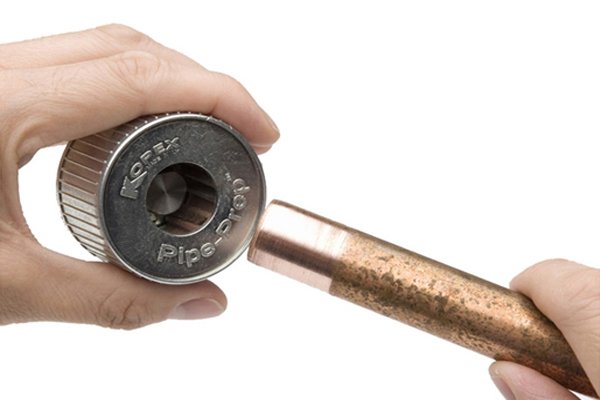 |
can polish copper pipes both inside and out, and may be housed in a metal or plastic casing.
There are various types available. Some contain mesh strips which smooth and flatten out any roughness, together with an internal metal deburring head which gets rid of ridges inside the rim. |
|||
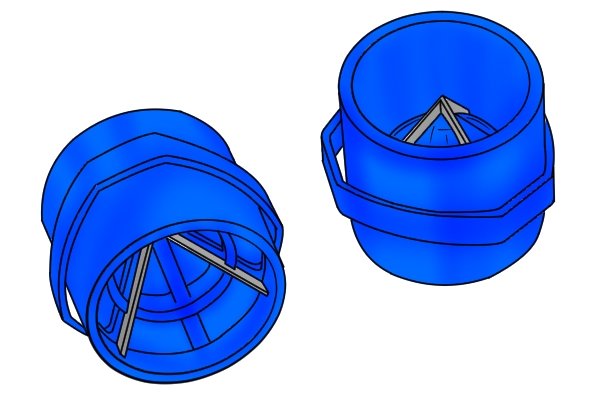 |
Others contain a triangular arrangement of metal blades which remove burrs from the pipes both inside and out… | |||
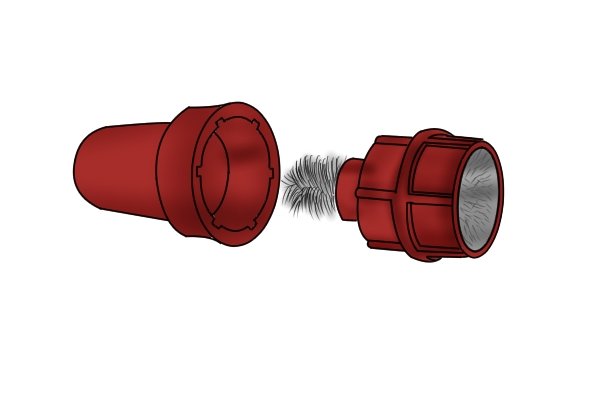 |
…or a cylindrical head lined with wire bristles to clean the outside of the pipe and an external wire brush to clean inside, together with a protective plastic cap. | |||
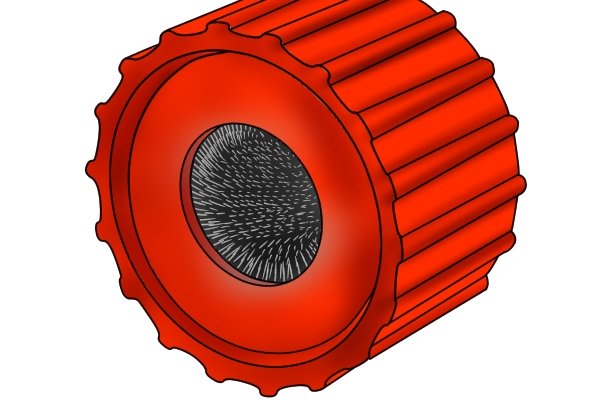 |
Other types have rows of abrasive metal teeth curled around the inside of the drum which are designed to only clean pipes on the outside. | |||
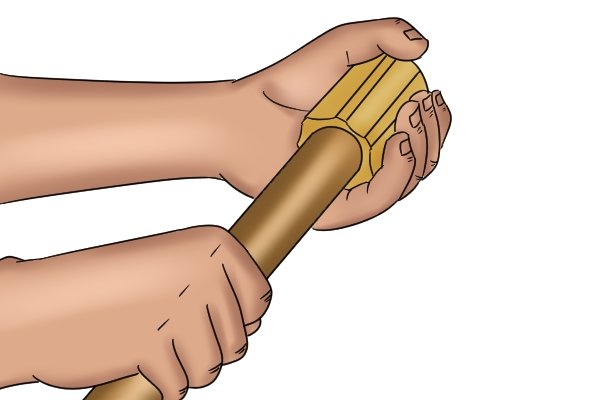 |
These kinds of deburring tools are worth considering if you’re looking for a small, lightweight device that won’t take up much space in your toolbox. However, they all require rotating by hand and you might find the repetitive wrist action tiring after a while. | |||
Pipe reamer |
||||
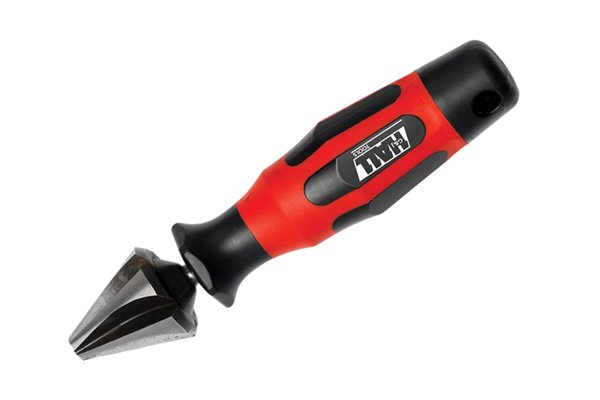 |
A , or hand reamer, is often also known as a deburrer, and consists of a tapered steel head attached to a handle. Push the head into the pipe and rotate several times to cut away burrs inside the rim. You will need a separate method of polishing the pipe.
As reamers are so rigid it’s easy to accidentally damage the interior of the pipe, so be careful to buy exactly the right size. They can be more expensive than ratchet-handle cleaners and can’t be used to deburr pipe surfaces, but will last a long time. |
|||
Powered pipe deburrers |
||||
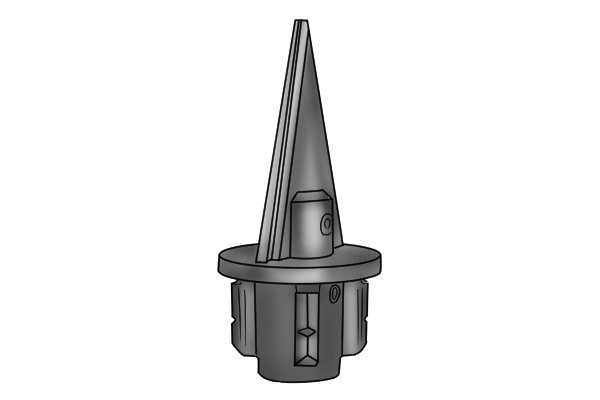 |
Pipe deburrers designed for use with power tools are widely available. They tend to cost more than a ratchet-handle cleaner but should be long lasting. They are usually made of steel and come in various sizes. You will need another tool to clean the outside of the pipe. | |||
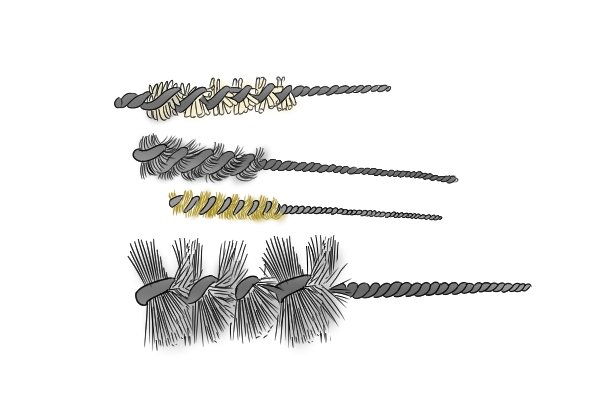 |
Many types and sizes of wire brushes with power drill threads are available too. They obviously require less effort than manual brushes but are not as easy to manipulate in tight spaces, and can’t be used on the outside of the pipe. | |||
Powered pipe cleaners |
||||
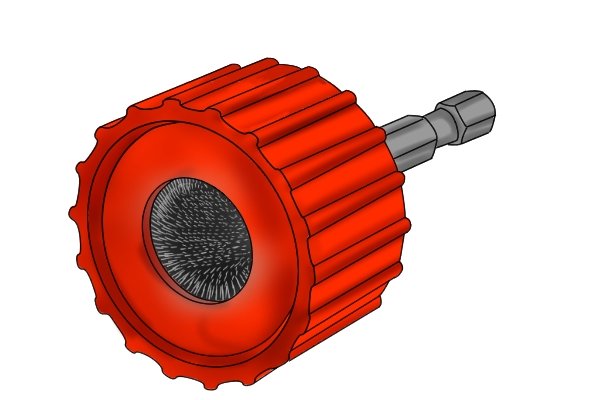 |
You can buy single-handed pipe cleaners with power drill fittings which will polish the outside of pipes, but they can be more expensive than ratchet-handle cleaners and can’t be used to do the inside. They usually come in 15mm (½”) and 22mm (¾”) sizes. | |||
Combined powered pipe cleaners and deburrers |
||||
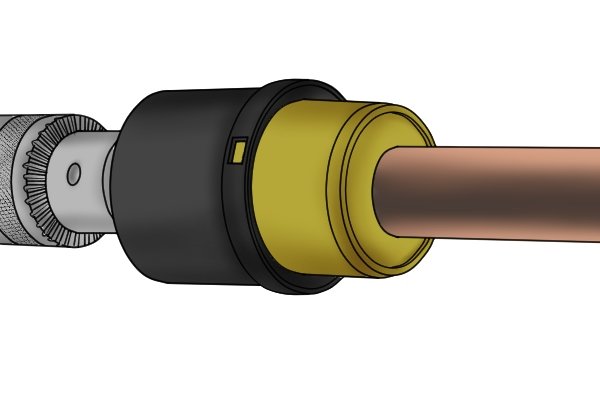 |
There are various types of electric drill attachments on the market which will both clean and deburr pipes.
Some contain metal blades which rotate at high speed to clean the inserted pipe both inside and out, and can be used either manually or attached to a drill with an adaptor… |
|||
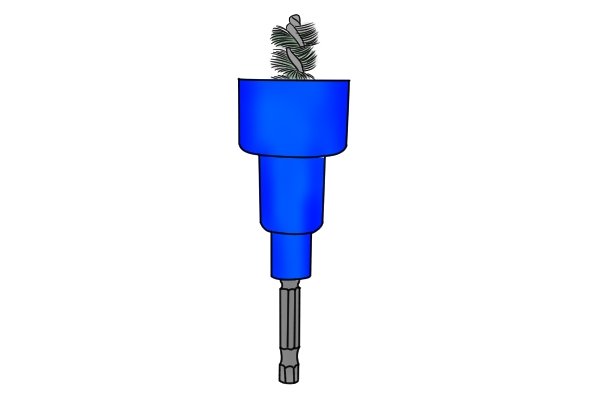 |
…while another type, called a turbo tube cleaner, is equipped with a rotating wire brush at the front which you push into the pipe end before switching on the drill. To polish the outside, press the wire brush down into the body of the tool, pull the head forward and insert the pipe. The head is lined with rows of wire bristles which sweep across the pipe to clean it.
This device costs about the same as a ratchet-handle pipe cleaner but may be less suitable for small spaces as it needs to be attached to a drill. It comes in 15mm (½”) and 22mm (¾”) sizes. |
|||
Power tools vs. hand tools |
||||
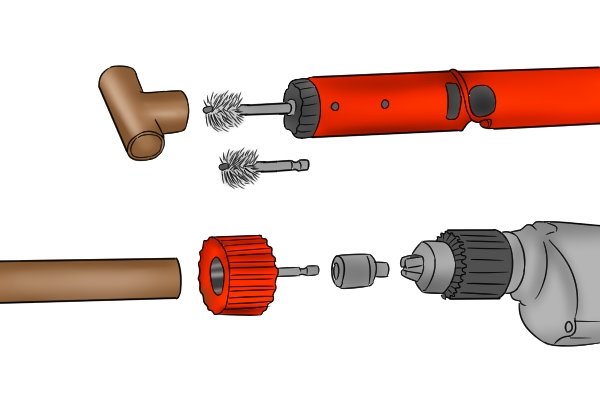 |
Power attachments can speed up the job and remove much of the physical effort from cleaning pipes, but usually cost more and may be awkward to operate in tight spaces.
Also, using a drill at too high a speed (more than 300 rpm) may damage the pipes, so there is more margin for error than with a manual tool. |
|||
| For more information on pipe cleaners and deburrers, see the Wonkee Donkee guide Deburring tools. | ||||






